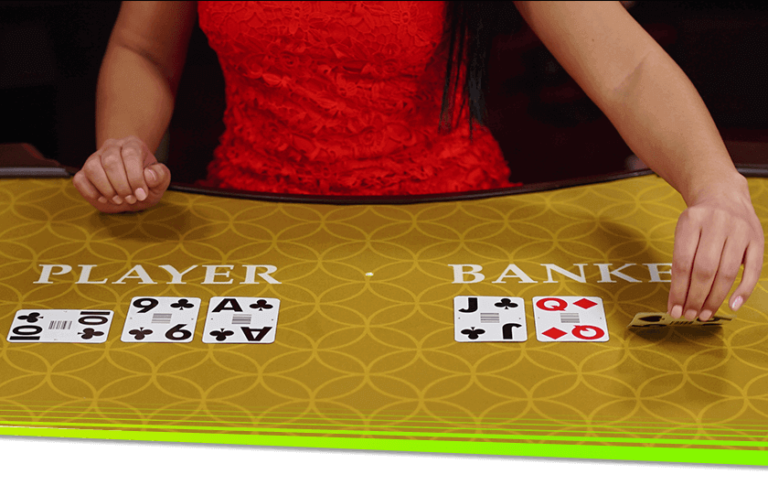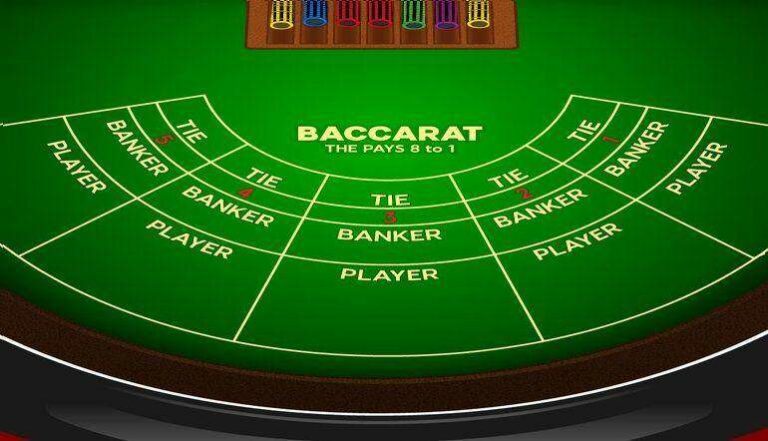Folding is an integral part of poker strategy, just as important as knowing when to bet or raise. Folding teaches you how to control your emotions at the table and helps you cut back your losses. Folding improves your overall winning percentage in the long run if you fold only when needed. While some hands are obviously instant fold, arguably, some hands should never be folded, but this is indeed a punchline. Each situation, each hand, and each game is unique, and you will find yourself folding some of the below hands, but think twice before doing so.
There is mathematics involved in assessing your folding frequency. For instance, the team of experts at TightPoker talks about Minimum Defense Frequency (MDF), a concept used primarily in No-Limit Texas Hold’em, which is a mathematical approach to preventing exploitation from aggressive opponents who may try to bluff too frequently.
10 Hands You Should Never Fold In Poker
On paper, raw profitability, statistical advantages, and improvement potential make some hands hard to give up on and fold.
We compiled and compared a few NLHE hands for you to see why these would be particularly hard to fold in many cases and why you should not get too attached to them either of them, especially postflop.
| Poker Hand | Statistical Advantage | Pre-flop Strategy | Post-flop Strategy | Early Position Strategy | Late Position Strategy | Main Risk |
|---|---|---|---|---|---|---|
| Pocket Aces (AA) | Strong advantage (85% vs random hand) | Raise/Re-raise | Play aggressively, be cautious with draws | Standard raise | Re-raise if possible | Overconfidence |
| Pocket Kings (KK) | Significant advantage (82% vs random hand) | Raise | Play aggressively, assess Ace on flop | Raise | 3-bet, 4-bet, 5-bet | Overcard on flop |
| Pocket Queens (QQ) | Strong advantage (Equity 54-82% vs most hands) | Be aggressive, 3-bet | Value extraction, caution with Aces/Kings | Consider calling with 3-bet | Adjust to opponents | Flop Aces/Kings |
| Ace-King (AK) | Strong (Top 2-3%) | Raise/Re-raise | Bet with top pair, cautious with misses | Raise | Call, 4-bet | Missed flop |
| Pocket Jacks (JJ) | Strong (77% vs random hand) | Raise/Call | Caution on overcards, bet on low boards | Consider calling in early | Raise in late | Overcard on flop |
| Ace-Queen (AQ) | Strong (Top 10%) | Raise/3-bet | Bet with top pair, be cautious with Ace/King on flop | Raise | Call, 4-bet bluff | Overcard on flop |
| Pocket Tens (TT) | Strong (75% vs random hand) | Raise | Navigate with overcards | Raise | Consider 4-bet | Overpair vs higher pair |
| Ace-Jack (AJ) | Strong (Top 12%) | Raise/3-bet | Bet with top pair, be cautious with Ace on flop | Fold in early position if facing aggression | Raise in late | Overcard on flop |
| King-Queen (KQ) | Strong (Top 5%) | Raise | Bet with top pair, caution on connected boards | Raise | Raise | Overcard on flop |
| Ace-Ten (AT) | Strong (Top 12%) | Raise/3-bet/call | Check with top pair, fold vs 4-bet | Fold in early vs strong raises | Raise in late | Overcard on flop |
Pocket Aces (AA)
Pocket Aces (AA) is the strongest starting hand in No-Limit Hold’em (NLHE) and has a significant statistical advantage over any other hand. Here’s why you should seldom fold Pocket Aces in NLHE:
Statistical Advantage
- Against any random hand, Pocket Aces will win about 85% of the time.
- Against a specific hand like A9o, Pocket Aces will win about 94% of the time.
- Even against the next best starting hand (KK), Pocket Aces has an approximately 80% chance of winning.
- The probability of being dealt Pocket Aces is 220:1 (0.45%).
Preflop
- You should almost always raise or re-raise with Pocket Aces to build the pot as quickly as possible.
- Avoid slow-playing, especially against a single raise.
- Keep your raise sizes consistent with other hands in your range to avoid giving away the strength of your hand.
Postflop
- Continue to play aggressively, especially if the flop improves your hand.
- Be cautious if the flop is suited/connected and could complete a draw.
- If you’re clearly going to lose at showdown, try to minimize your losses.
Table Position
- In early position, make a standard raise.
- In late position, consider re-raising if there’s been a raise.
- If you’re comfortable and face a 4-bet, you can decide to go all-in.
Types of Opponents
- Against aggressive players, consider slow-playing to induce bluffs.
- Against tight players, bet aggressively as they’re likely to fold weaker hands.
Cash Game vs Tournament
- The strategy remains largely the same in both cash games and tournaments.
- However, in tournaments, as the blinds increase or when your stack size is small, going all-in preflop with AA can be a good strategy.
Remember, while AA is statistically the best starting hand in NLHE, it’s not unbeatable and can lose to any other hand given the right community cards. So, while you should play this hand aggressively, it’s also important not to get too attached to it and be prepared to fold postflop if the situation calls for it. Poker is a game of skill and strategy that involves making the best decisions based on the information available to you.
Pocket Kings (KK)
Pocket Kings (KK) is the second strongest starting hand in No-Limit Hold’em (NLHE), only behind Pocket Aces (AA). It has a significant statistical advantage over most other hands. Here’s how to play it in different scenarios:
Statistical Advantage
- Against any two random cards, KK has an 82% chance of winning.
- Against any pocket pair (except AA), KK is an 80% favorite.
- Against AK (Ace-King), KK is a 70% favorite.
- Even against the dreaded AA, KK still has a 19% chance to win.
Table Position
- Regardless of your position, you should always raise with KK when the action folds to you.
- Avoid limping as it leads to smaller pots being won by you on average over time.
Types of Opponents
- Against a raise, you should 3-bet with KK every single time.
- When facing a 3-bet with KK, you should almost always continue to build the pot with a 4-bet.
- Against a 4-Bet, slow-playing can sometimes be acceptable, but most of the time, you should simply 5-bet all-in.
Cash Game vs Tournament
- While both cash games and tournaments require different skill sets, the strategy for playing KK remains largely the same.
- However, in cash games, there tends to be more post-flop play which can make playing KK more complex.
- In tournaments, due to shorter stacks, all-in situations are more frequent.
Strategies
- You should also play your pocket kings very aggressively after the flop.
- If an Ace appears on the flop (about 22% of the time), assessing your opponents’ reactions and potential holdings is important before deciding on your next move.
- In general, you shouldn’t slow-play preflop. You should usually raise with this hand or 3-betting/squeezing with it if someone has already come in for a raise.
Pocket Queens (QQ)
Pocket Queens (QQ) is one of the most powerful starting hands in No-Limit Hold’em (NLHE), ranking as the third-best starting hand, right behind pocket Aces and pocket Kings. Here’s why you should rarely fold Pocket Queens in NLHE:
Statistical Advantage
- Against the two hands that are ahead of QQ (AA and KK), Queens has an equity of 18%.
- Against every other starting hand, QQ has an equity ranging from 54% to 82%.
- This makes QQ one of the most profitable hands you can play in NLHE.
Preflop
- Be aggressive with Queens preflop. This means open-raising, isolating, and 3-betting as a default.
- If you consistently call preflop raises with QQ, you are almost certainly doing something wrong.
- When in doubt, 3-bet with QQ preflop.
Post-flop Strategy
- Statistical analysis shows that pocket Queens connect strongly with the flop about 12% of the time by making a set or something stronger (like a full house or even quads).
- When you connect strongly, you’ll be in a great position to extract a lot of value.
- However, it can be tricky if an Ace or King lands on the flop. You might still have the best hand, but an opponent could easily have you beat.
- In such cases, consider the pre-flop action. If an opponent who rarely raises suddenly comes out betting, they might have an Ace or King.
- If the flop is relatively safe (no Aces or Kings), you can continue to play aggressively.
- Be mindful of possible straights and flushes that could beat your pair of Queens.
Table Position
- Consider just calling with Pocket Queens when you open from Early Position or Middle Position and face a 3-bet from one of the blinds.
Types of Opponents
- If your opponent is super-tight and will only ever re-raise with aces, kings, or ace-king then you can work out the probability of each using card distribution.
- Against a looser opponent, there is a greater likelihood that your hand is the best before the flop, even when re-raised.
Cash Game vs Tournament
- In cash games, players should fold most hands before the flop. Only play hands with a good chance of winning a big pot, such as high pairs, suited connectors, and high Broadway cards like A-Q and K-J.
- In tournaments or games with smaller effective stack sizes, you should aim to get your stack all-in preflop more regularly. But with more depth (especially 200BB+), getting QQ all-in preflop is less common.
Ace-King (AK)
Ace-King (AK), or “Big Slick,” is a strong starting hand in No-Limit Hold’em Poker. Folding this hand pre-flop is not recommended due to its high potential.
Statistical Advantage
- AK is in the top 2-3% of all starting hands in No Limit Hold’em.
- In terms of raw equity, AK suited beats a random starting hand 67% of the time.
- However, it’s slightly behind a hand like pocket twos in a direct match-up.
Preflop
- If the pot is unopened, raise with AK 100% of the time.
- If there is a single raise, re-raise.
- When faced with a 3-bet, you should almost always 4-bet for value with AK.
- When facing a 4-bet, you should always continue with AK.
Postflop
- If you miss the flop, becoming defensive is often a good idea.
- You must hit your ace or king on the flop or don’t bet.
Table Position
- Raising, especially from position, will thin the field – ideally to a single opponent.
- If that opponent checks to you on the flop, you can often take the pot away from them with a continuation bet.
Types of Opponents
- Against loose players: Raise and bet rather than call – you want to have the lead in the hand as often as you can.
- Against tight players: Consider just calling with AK when you’re in early positions versus the blinds.
Cash Game vs Tournament
- In cash games, post-flop play can be more complex due to deeper stacks, leading to more decisions that can be harder to get right.
- In tournaments, there are many ChipEV vs $EV considerations and many complications created by differing stack sizes and by the state of the tournament.
Strategies
- Play AK positively until you encounter resistance, both before the flop and in later betting.
- If effective stacks are small, your best move is often to get all-in before the flop with this hand.
- When you have a deep stack holding AK, a pre-flop re-raise can give you valuable information on your opponent’s hand.
Pocket Jacks (JJ)
Pocket Jacks (JJ) is a strong starting hand in No-Limit Hold’em (NLHE) poker, ranking as the fourth or fifth best starting hand. It’s statistically favored against almost every other hand, winning around 77% of the time against two randomly selected cards. Even against a suited Ace-King, Pocket Jacks are slightly ahead, winning just under 54% of the time.
However, playing Pocket Jacks can be tricky due to its vulnerability to overcards (Aces, Kings, Queens) on the flop. Here are some strategies for different scenarios:
Preflop
- In early position, consider just calling the big blind to see a flop and try to hit a set.
- In later position, consider raising to build a bigger pot.
- If you’re short-stacked in a tournament situation, you might want to go all-in.
- If you’re in a cash game with 6 people and a 100 big blind stack, protect your equity by thinning the field. Ideally, get into a heads-up situation.
Postflop
- If there’s an overcard on the flop, it can be hard to know where you stand. You might want to slow down or even fold if your opponent shows aggression.
- If the flop brings three lower cards, your hand doesn’t need to improve to be best.
- Don’t overplay your pocket Jacks post-flop: often you should call, not raise.
Table Position
- Your position relative to other players can impact how you play Pocket Jacks. For example, if an aggressive player still has to act after you, this could influence your decision.
Types of Opponents
- Against aggressive players, you might want to play more cautiously.
- Against passive players, you could potentially be more aggressive.
Cash Game vs Tournament
- In cash games, players should fold most hands before the flop. Only play hands that have a good chance of winning a big pot.
- In tournaments, especially when short-stacked, shoving with Pocket Jacks can be a viable strategy.
Ace-Queen (AQ)
Ace-Queen (AQ) is considered a strong hand in No-Limit Hold’em (NLHE) due to its high ranking. It’s in the top 10% of possible starting hands. However, it’s not a premium hand and can be challenging to play compared to other strong starting hands. Here’s how you can play AQ in different scenarios:
Preflop
- If the action folds to you, you should always raise with AQ from every position.
- When faced with a raise, you should 3-bet with AQ almost every time. The exception is when you are in the big blind facing a raise from a player seated in the cutoff position or earlier.
- When faced with a 3-bet, AQ can perform great as both a call and a 4-bet bluff. The hand works well as a 4-bet bluff when the 3-bettor’s range is tight because the hand’s blocker effects are more impactful.
Postflop
- If you have AQ and the flop comes Ace-high or Queen-high, you have a strong hand worth multiple streets of value. You should always start with a bet on the flop, and usually look to bet again on the turn and a final time on the river.
- If multiple straights complete or if there’s four-to-a-straight or flush, consider slowing down with a check.
Table Position
- Your position at the table can significantly influence how you play AQ. For instance, when you’re playing in a 9-handed game, you can fold with AQ when the first player (Under The Gun) raises, and you are seated in the cutoff position or earlier.
Types of Opponents
- Against very tight 4-bettors, especially if you play low stakes live or micro stake online, it’s suggested that you fold as you are most likely up against Pocket Jacks through Pocket Aces or Ace-King.
Cash Game vs Tournament
- The strategies for playing AQ can vary between cash games and tournaments due to differences in stack sizes, blind structures, and payout considerations. However, the basic principles of playing strong starting hands, considering position, and adjusting to opponent tendencies remain consistent.
Pocket Tens (TT)
Pocket Tens (TT) is a strong starting hand in No-Limit Hold’em (NLHE) and should not be folded preflop under normal circumstances. In a very active and dramatic preflop, you may need to fold as you’re likely facing hands with much higher potential.
Statistical Advantage
- Pocket tens win about 75% of the time against any random hand.
- Against a higher pair, pocket tens win less than 20% of the time.
- There’s around a 10% chance of your opponent having a higher pair in 6-max (15% in full ring).
Preflop
- Always raise preflop with tens when the action is folded to you.
- Avoid limping with tens.
- Usually 3-bet when facing a raise.
- Call if you 3-bet and face a 4-bet.
Postflop
- Often navigate the flop and beyond with at least one overcard on the board.
- Don’t get married to your hand.
Table Position
- Open from any position with pocket tens.
Types of Opponents
- Play well in 3-bet pots against aggressive opponents due to the hand’s ability to flop sets.
- 4-betting is also a viable option in late position battles against aggressive 3-bettors – specifically when you will be out of position postflop.
Cash Game vs Tournament
- More post-flop play in cash games, which can make it more challenging.
- In tournaments, survival has value. That means folding has a positive expectation, not $0 as in a cash game.
Strategies
- Play pocket tens aggressively because if there are many participants in the hand, then you can play already post-flop.
- If you play with an average stack, then this is definitely all-in. If the stack is above average, then raising 5BB will be close enough to the hand.
Ace-Jack (AJ)
Ace-Jack (AJ) is a strong hand in No-Limit Hold’em (NLHE), but it’s not an absolute rule that you should never fold it. The decision to play or fold AJ can depend on several factors, including the game scenario, your position at the table, and the types of opponents you face. Here’s a detailed breakdown:
Statistical Advantage
- AJ has a good statistical advantage over many other hands. For example, against a random hand, AJ has approximately a 63% chance of winning. However, it’s important to note that poker is a game of skill and strategy, and raw statistical advantage doesn’t always translate into winning.
Preflop
- In an unopened pot, you should almost always raise with AJ. If you’re in early position at a full-ring table, you might consider folding if your opponents are aggressive.
- When facing a raise, your action depends on your opponent’s position and your own. If someone raises from early or middle position, AJ might not be strong enough to contest the pot profitably. But if a player raises from late position, you should contest the pot with AJ by either calling or 3-betting.
Postflop
- Postflop play with AJ can be complex and situational. If you hit a top pair with either the Ace or Jack, your hand will be strong and extracting value becomes a priority.
- However, if the flop doesn’t improve your hand, you might need to proceed with caution depending on the actions of your opponents.
Table Position
- Your position at the table significantly influences how you should play AJ. If you’re in early position at a full-ring table, you might consider folding AJ if your opponents are aggressive. But if you’re in late position or playing short-handed, raising and re-raising with AJ can be effective.
Types of Opponents
- The types of opponents you face also impact how you should play AJ. If you’re up against aggressive players who often 3-bet, you might need to be more cautious with AJ. But if you’re playing against weak players who often make mistakes, playing aggressively with AJ can be profitable.
Cash Game vs Tournament
- In cash games, where deep-stack play is more common, there’s often more postflop play. This can make playing hands like AJ more challenging as it requires skillful postflop play.
- In tournaments, however, the high variance of short-stack play means that strong preflop hands like AJ can often win big pots. This makes tournaments exciting for both recreational and regular players.
Strategies
- One common strategy is always to raise when first into the pot with AJ. This gives you control of the pot and sets you up for a continuation bet postflop.
- Another strategy is to 3-bet with AJ when facing a raise from late position. This can help narrow down the field and increase the chances of going heads-up to the flop.
King-Queen (KQ)
King-Queen (KQ) is a strong hand in No-Limit Hold’em (NLHE) and should not be folded under normal circumstances due to its statistical advantage and strategic potential. Here’s a breakdown of how to play it in different scenarios:
Statistical Advantage
- KQ is the 7th best-starting hand in Texas Hold’em, so it’s one of the top 5% of starting hands.
- KQ has a good potential to hit straights as it is connected. It can make four different straights, which is more than any other hand except for Ace-King.
- KQ plays well postflop. It will often make top pair with a good kicker, or a strong draw to the nuts.
Preflop
- KQ is a profitable open-raise from all positions in both 6 and 9-handed games.
- If you don’t face a 3-bet preflop, you can be almost certain that you have the best kicker anytime you flop top pair.
- Against a raise, KQ will almost always be more profitable as a 3-bet rather than as a call.
- When facing a 3-bet after opening, KQ should always call.
- The best play with KQ versus a 4-bet heavily depends on the positional match-up and your opponent’s tendencies.
Postflop
- You should tread very carefully postflop when you flop top pair.
- King and Queen-high boards are generally best played passively with KQ in 3-bet pots as the caller.
Table Position
- Playing KQ from early position is a little tricky and is best laid down or simply calling the bet.
- If you are in late position, then a re-raise will be good to get the ace in a spot.
Types of Opponents
- The size of your opponent’s stacks, how loose or tight, passive or aggressive they are, and where these opponents are located at the table can all affect your decision-making process.
Cash Game vs Tournament
- In cash games, KQ is a profitable open-raise from all positions. As long as you don’t face a 3-bet preflop, you can be almost certain that you have the best kicker anytime you flop top pair.
- In tournaments, the strategy may vary based on the tournament stage, stack sizes, and blind levels.
Strategies
- Unopened Pots: KQ is a profitable open-raise from all positions in both 6 and 9-handed games.
- Playing Against a Raise: KQ will almost always be more profitable as a 3-bet when facing a raise, rather than as a call.
- Against a 3-Bet: When facing a 3-bet after opening, KQ should always call.
- Against a 4-Bet: The best play with KQ versus a 4-bet heavily depends on the positional match-up and your opponent’s tendencies.
Ace-Ten (AT)
Ace-Ten (AT) is a strong hand in No-Limit Hold’em (NLHE), ranking in about the top 12% of preflop hands. However, it’s important to note that while AT is a strong hand, it’s not always a hand that you should never fold. The decision to play or fold AT can depend on various factors such as the game scenario (preflop, postflop), table position, types of opponents, and whether it’s a cash game or tournament.
Statistical Advantage
- AT is a strong hand, ranking in the top 12% of preflop hands. This means it has a high likelihood of being the best hand preflop.
- AT has the potential to make a straight with KQJ, QJ9, or J98.
Preflop Strategy
- If no one has raised yet, you should open-raise AT from any position.
- If there’s an open-raise, AT can be played as a 3-bet or call when you are in position against the player who has open-raised. However, you may want to fold AT if the open-raiser is in the earliest positions (UTG or UTG+1).
- When facing a 3-bet after you open, calling, 4-betting, and folding are all close in expected value (EV) regardless of your position.
- If you face a 4-bet after you 3-bet, it’s generally advised to fold AT.
Postflop Strategy
- If you hit the flop with AT suited, for example, when you are out of position as the preflop raiser in a single raised pot (blind vs blind) and the board is Ten-high and connected, you should consider checking with your top pair.
Table Position
- Your position at the table is crucial in NLHE. The later your position, the wider range of cards you can play profitably. Therefore, how you play AT can vary based on your position at the table.
Types of Opponents
- The playing style of your opponents can also influence how you play AT. For instance, if your opponents are loose or aggressive, you might need to adjust your strategy accordingly.
Cash Game vs Tournament
- In cash games, more postflop play can make playing AT more challenging. However, the high variance of short-stack tournament play in tournaments means that even weaker players can last longer. This means that in tournaments, you can potentially find yourself playing against a huge fish deep in a tournament when the relative stakes are huge.
Factors Determining Whether To Fold A Hand
No great poker player makes decisions based on their cards only; whatever the hand they hold may be. A multitude of factors come into play.
Position
Understanding your position at the poker table is crucial to make informed decisions. The positions are usually divided into three categories: early, middle, and late. When in an early position, you are among the first to act post-flop, which can be limiting as less information is available on other players’ intentions. On the other hand, a late position offers the advantage of observing how others have played their hands before it’s your turn. In No-Limit Hold’em (NLHE), the power of position is significant, as it directly affects decision-making at every stage of a hand.
For example, a hand like AQ or AJ may be strong enough to play from a late position, but from an early position, the risk of someone holding a better hand is higher. Positional awareness helps assess the strength of one’s hand by providing information on how others act, guiding when to play aggressively or when to fold. As a result, it is a core strategic element in poker.
Table Dynamics
Understanding the dynamics at a poker table is crucial for adapting one’s strategy. Such dynamics are primarily influenced by the types of players and the prevailing table image and history. Players can be categorized as aggressive, passive, loose, or tight. Knowing these categories enables one to adjust their gameplay accordingly. For example, against aggressive players, it might be wise to play more conservatively or set traps with strong hands.
When making decisions, table image and history play a significant role. A sudden aggressive move could signal a very strong hand if a player is perceived as a tight player. In the same way, understanding how individuals have played specific hands in the past can give insights into their likely holdings. Being able to read and adapt to table dynamics while also being aware of one’s table image is key in making informed decisions on whether to fold or continue playing.
Hand Strength
In NLHE, hand strength is primarily evaluated by the two hole cards dealt to a player. High cards like Aces and Kings, pocket pairs, and suited connectors are undoubtedly seen as strong starting hands due to their high potential of connecting with the board favorably or already starting off strong.
However, the potential for improvement is a crucial factor. Hands that have multiple ways of improving on later streets, such as suited connectors, have what is known as “implied odds.” As the community cards are revealed, the strength of a hand can change drastically. Therefore, it’s often the potential for a hand to improve or deteriorate that determines whether holding or folding is a wise choice, along with the perceived hand strength of opponents.
Pot Odds and Expected Value
Pot odds refer to the ratio between the size of the pot and the cost of a call. They are crucial for understanding whether or not a call is statistically profitable in the long run. For instance, if the pot is $100 and the bet is $10, the pot odds are 10:1. Understanding pot odds can guide a player on whether to fold or continue with the hand based on the chance of completing a desired hand.
On the other hand, expected value (EV) is a more advanced concept that represents the average amount a player can expect to win or lose with a specific play over the long run. Calculating the EV of a call, fold, or raise at any given situation can provide a more nuanced understanding of the mathematical profitability of that decision. Both pot odds and expected value are fundamental concepts for making well-informed decisions in poker.
Tournament Stage/Cash Game Stack Size
The tournament stage or the stack size in a cash game significantly affects the strategy regarding folding or holding a hand. In the early stages of a tournament, with a deep stack, a player can afford to take more risks or play speculative hands. As the tournament progresses to middle and late stages, stack preservation and picking the right spots become increasingly important.
The dynamics of deep stack versus short stack play are unique in cash games. With a deep stack, there’s room for more post-flop play, maneuvering, and exploiting opponents. Conversely, short-stack play often leads to a more conservative or all-in/fold strategy. Understanding the nuances of tournament stages and stack sizes in cash games and adjusting one’s strategy accordingly is paramount in making correct fold or hold decisions in NLHE.
To succeed in poker, mastering the art of folding is just as important as playing aggressively. The article covered ten strong NLHE hands and their respective strategies, but it’s important to remember that no hand is exempt from being folded when necessary. Exceptional poker players are those who can adapt to changing dynamics, read their opponents, calculate pot odds, and make informed decisions based on various factors. Striking a balance between boldness and prudence is key to navigating the intricate world of poker strategy and achieving long-term success.
This article was published on October 6, 2023, and last updated on October 6, 2023.



















